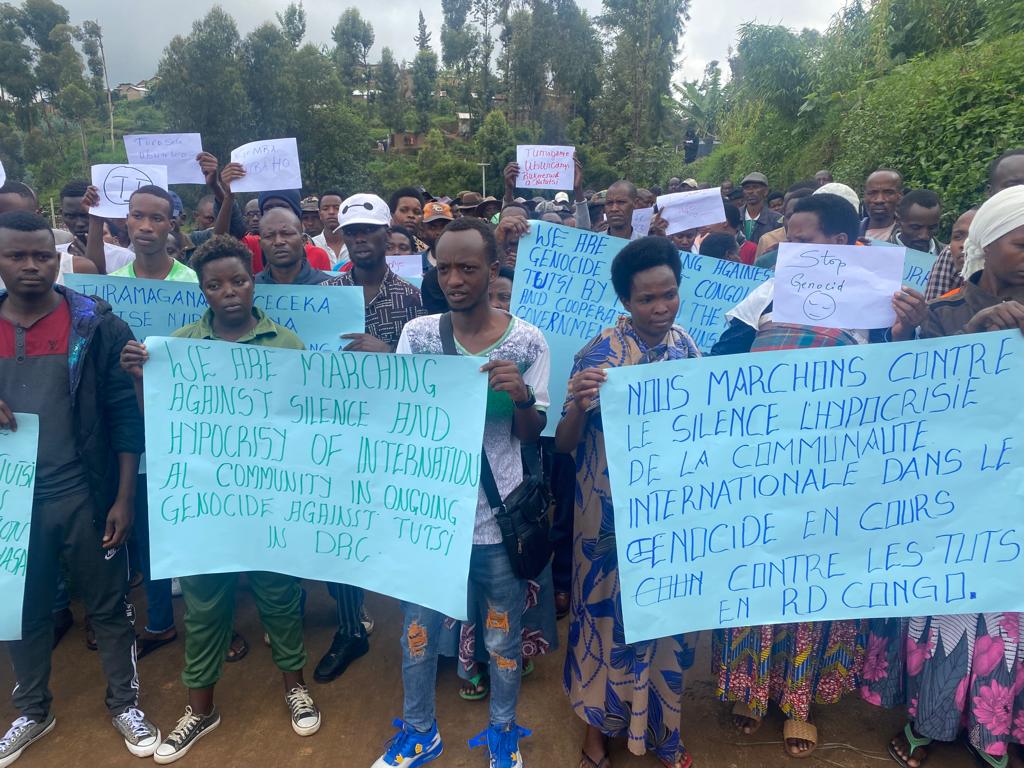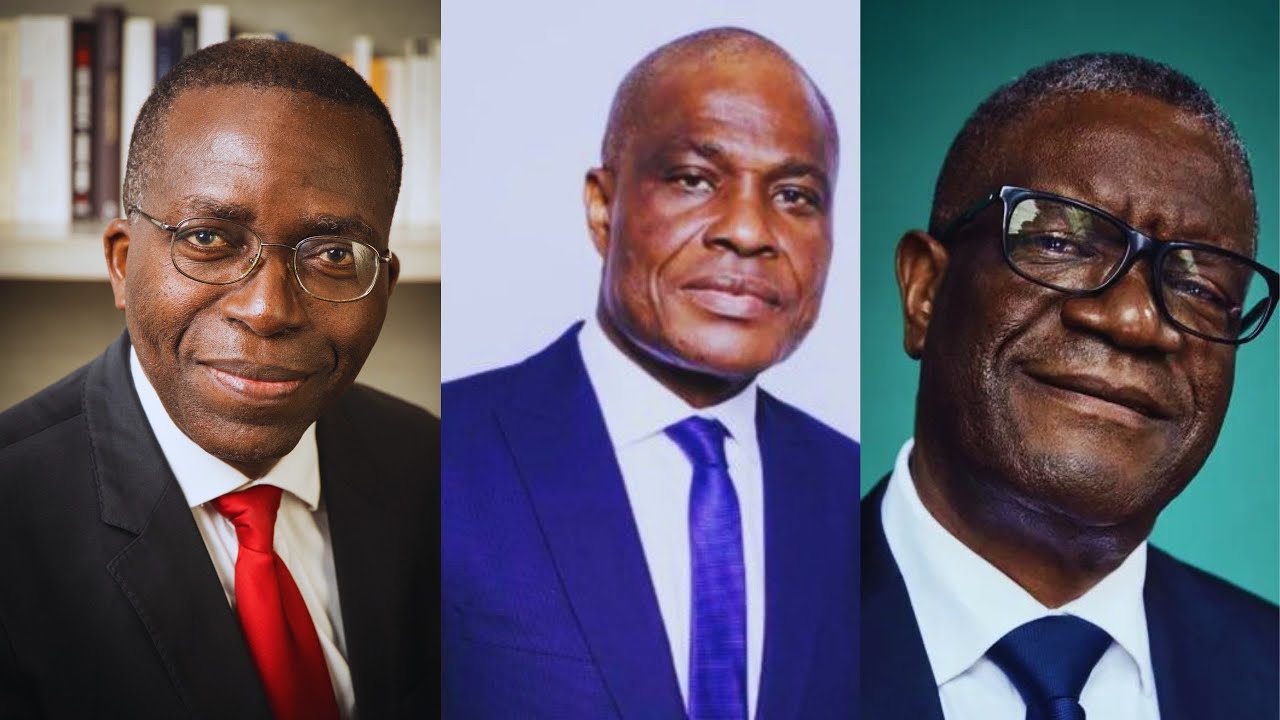Regional
DRC: How a genocidal militia created, trained multiple armed groups

FDLR President Maj Gen Gaston Iyamuremye aka Victor Byiringiro
The volatile east of the Democratic Republic of Congo (DRC) has
experienced hostilities for almost three decades.
Despite the presence of UN troops and the Congolese army, armed groups
have multiplied to more than 130 in the region, with FDLR which is creating and
training other groups, day to day, among the biggest threats to regional
security due to its genocide ideology.
The FDLR comprises remnants (ex-FAR and Interahamwe militia) of the
perpetrators of the 1994 genocide against the Tutsi in Rwanda. They fled to
eastern DRC in July 1994, hoping to reorganise and return to Rwanda by force to
complete their genocidal agenda. It was not to be.
For nearly the past three decades, they have spread their genocidal ideology
in eastern DRC, with disastrous consequences.
In July 2002, after talks that lasted five days, Kigali and Kinshasa
signed the Pretoria Accord to end the Second Congo War, which required Rwanda
to withdraw its troops from DRC in exchange for international commitment
towards the disarmament of the genocidal forces.
Kigali withdrew its troops as agreed. But for two decades now, Kinshasa
and the international community never disarmed or repatriated the genocidal
forces, which later formed the now active FDLR terror group.
To strengthen its position, the genocidal militia formalized its
collaboration with pro-Kinshasa armed groups as advised by Congolese
officials. In 2001, a pact was signed between Maj Gen Paul Rwarakabije
(now retired after repatriation) on behalf of FDLR and Kalendo Bulenda, alias
Padiri, on behalf of Congolese Mai-Mai groups.
Since then, FDLR created many armed groups with the same genocide
ideology, aiming at eliminating the Tutsi wherever they are. Here are a few of the groups it formed.
Nyatura
The 15 active Nyatura factions in Masisi and Rutshuru territories, including
Nyatura John Love and Nyatura Domi, were created and trained by FDLR with claims
of protecting Congolese Hutu community.
The term Nyatura which means “hit hard” in Kinyarwanda, emerged in the
2010s in association with armed mobilization of the Congolese Hutu community.
Col Tokolanga of FARDC and Col Guido of Nyatura NCD-R during Pinga Meeting on May 9, 2022 as of the report by UN Group of Experts on DRC published in December 2022
Nyatura groups have their roots in the armed mobilization of the 1990s, including the Mutuelle des Agriculteurs de Virunga (MAGRIVI) combatants and the Hutu branch of Patriotes résistants Congolais (PARECO).
Currently, most of them work closely with the Congolese army and FDLR to
fight the M23 rebels and other armed groups whose aim is to protect Congolese
Tutsi who are being persecuted.
Nyatura John Love was created in 2016 by Muhawenimana Bunombe, known as John Love, a
Congolese teacher from the Hutu community.
He joined the FDLR and repaired the group’s computers while undergoing military training. With the blessing of FDLR senior commanders, he later created his own militia that operates in Rutshuru territory with over 100 combatants.
The Nyatura
Domi or Nyatura-FPC faction –led by Dominique Ndaruhutse, known as Domi–
emerged between 2013 and 2014 due to tensions between other Nyatura factions
led by Muchoma and Bapfakururimi, who were later demobilized. It has more than
150 combatants.
Nyatura John Love and Nyatura Domi are members of Collectif des Mouvements pour le Changement (CMC) coalition, which is
FDLR’s strategic partner with local armed groups.
Other Nyatura groups created and collaborating with FDLR include; Nyatura
Benjamin, Nyatura Niyonzimana, Nyatura Kasongo, Nyatura Jean-Marie, Nyatura
Kavumbi, Nyatura Kigingi, Nyatura Bavakure, Nyatura Delta, Nyatura Gatuza,
Nyatura Nzayi, Nyatura Mahanga, Nyatura Kalume, and Nyatura Bizagwira.
Each Nyatura group is named after its commander.
From left to right in military uniforms: Col Guido of Nyatura Col Tokolanga of FARDC and two FARDC officers
APCLS
The Alliance des Patriotes
pour un Congo Libre et Souverain (APCLS)
was created in 2010 from one of the three components of PARECO. The group is among
the main Mai-Mai groups operating in eastern DRC, under the command of self-proclaimed
Gen Janvier Karairi.
Gen Janvier Kahahiri of APCLS during Pinga meeting
It maintains strongholds in Masisi territory and claims to defend the interests
of the Hunde population. It has engaged in a wide range of alliances and
confrontations with other armed actors in the area.
APCLS rebels
The M23 is currently fighting with the coalition of the Congolese army
and those armed groups operating in Rutshuru, Nyiragongo and Masisi territories,
with the same genocide ideology as their mentor, FDLR.
According to a Human Rights Watch report published in October 2022, FDLR
fighters have killed hundreds of civilians over the years in eastern DRC, at
times hacking civilians to death with machetes or hoes or burning them in their
homes. The militia fighters have committed countless rapes and other acts of
sexual violence.
The FDLR is plundering resources in areas it occupies to better equip
itself with heavy weapons, so as to attack Rwanda.







